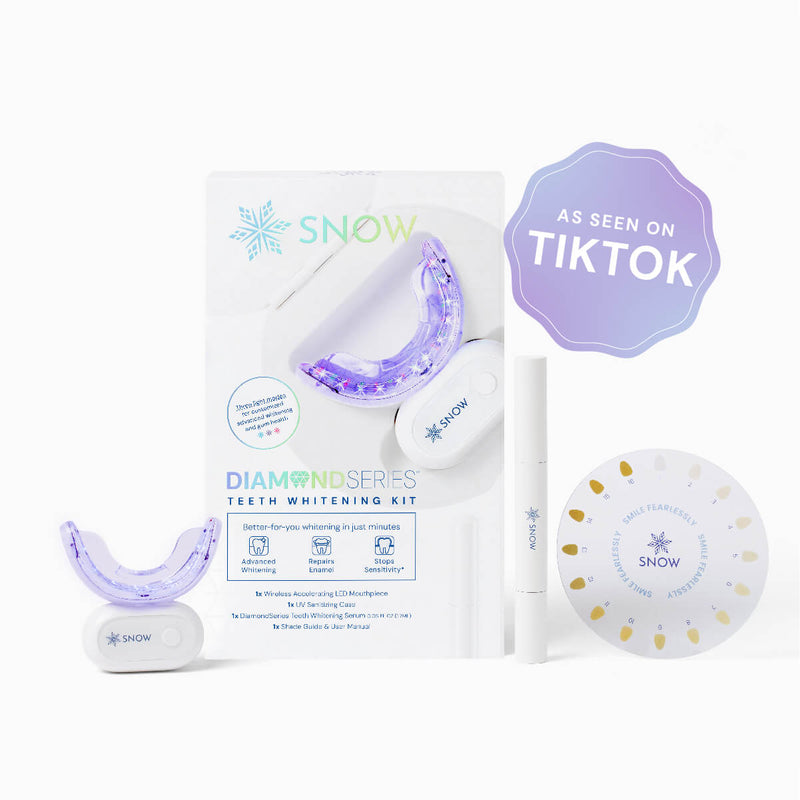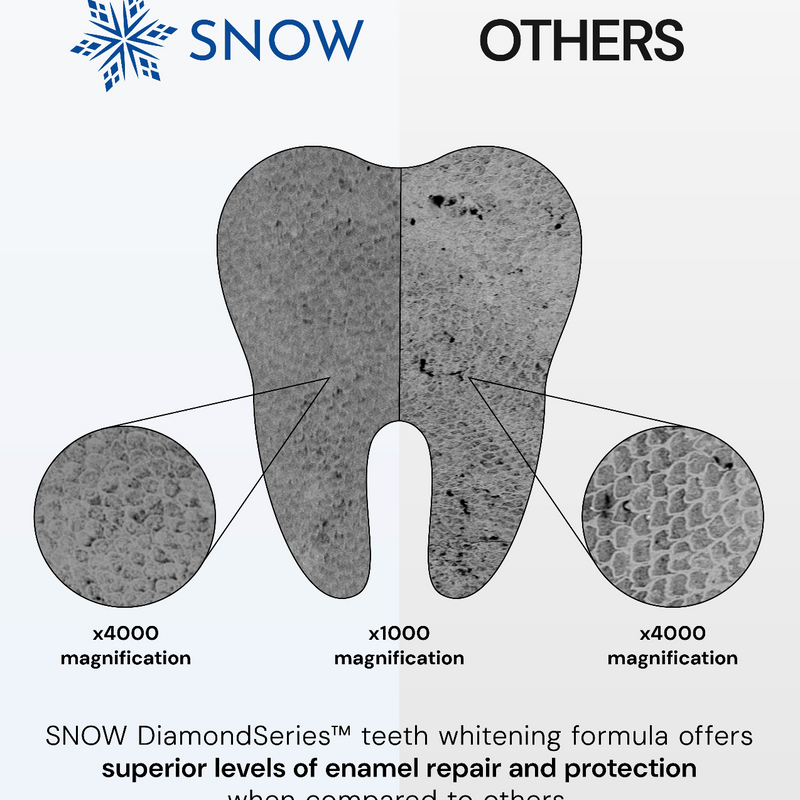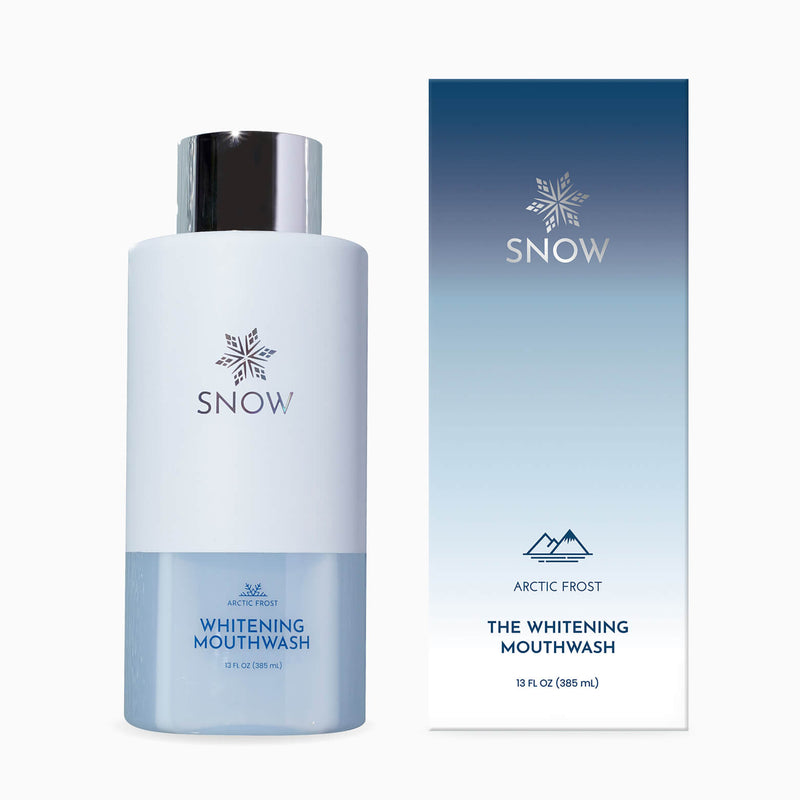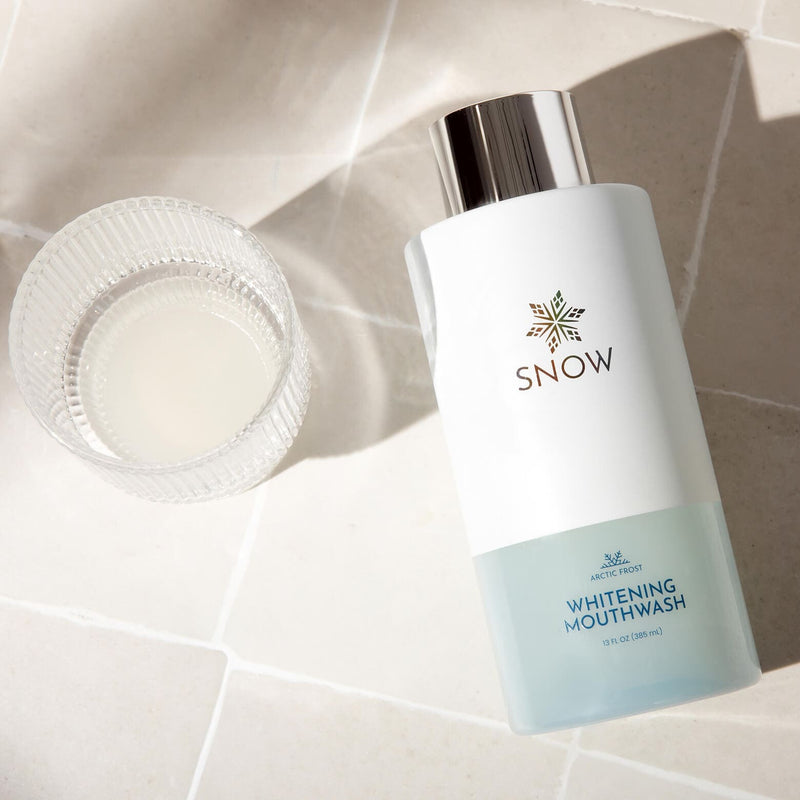Looking for what is best toothpaste for whitening teeth? If you’ve tried a few already, you know most whitening toothpastes don’t live up to the hype—and some even cause sensitivity. A cosmetic dentist would warn against harsh formulas that erode enamel. That’s why we’ve curated a list of whitening toothpastes recommended for real results and safer daily use. In this guide, you'll find gentle yet powerful options to help you achieve a brighter, healthier-looking smile—without compromising comfort.
Key Takeaways
-
Whitening toothpastes use chemical bleaching and physical abrasion to remove stains and enhance tooth color, but overuse can damage enamel and gums.
-
Key ingredients for effective whitening include hydrogen peroxide, carbamide peroxide, baking soda, and activated charcoal, with options available for those preferring natural ingredients.
-
Top whitening toothpastes such as SNOW Teeth Whitening, Crest 3D White Brilliance, and Sensodyne Pronamel offer varying benefits from intensive whitening to sensitivity prevention.
How Whitening Toothpastes Work
Whitening toothpastes remove surface stains and enhance the natural tooth color of your teeth using two methods: chemical bleaching and physical abrasion. Chemical agents like hydrogen peroxide and carbamide peroxide break down stains at a molecular level, while mild abrasives scrub away surface stains from food, drinks, and smoking. Whitening agents are also effective in this process.
These products primarily target extrinsic stains, which appear on the outer enamel. According to a study published in the National Library of Medicine (NLM), commercial whitening toothpastes improve tooth whiteness by gradually removing and controlling extrinsic stains over time. They’re most effective for patients seeking steady, long-term results between professional cleanings.
These toothpastes are particularly effective against tough stains and extrinsic stains from everyday consumables like red wine, turmeric, coffee, and other stain causing foods. However, overuse or using harsh abrasives can damage tooth enamel and gums, leading to sensitivity pain and acid erosion. Thus, selecting a toothpaste that balances efficacy with gentleness is crucial for removing deep stains, considering the teeth sensitivity and sensitive teeth cons.
Key Ingredients for Effective Teeth Whitening
To achieve a brighter smile while maintaining oral health, it’s essential to understand what goes into effective whitening toothpastes. Here are the key ingredients to look for:
-
Hydrogen Peroxide: A proven bleaching agent that penetrates the enamel to break down deep stains for noticeable whitening.
-
Carbamide Peroxide: A gentler alternative to hydrogen peroxide, ideal for reducing the risk of tooth sensitivity while still providing gradual whitening results.
-
Baking Soda: A mild abrasive that lifts surface stains and helps neutralize acids—supporting enamel health and fighting tooth decay.
-
Activated Charcoal: Known for absorbing surface stains and toxins. Best used in moderation, as overuse may increase tooth sensitivity.
-
Sodium Fluoride: Strengthens enamel and helps prevent tooth decay. Products containing fluoride are often backed by the American Dental Association for safe, daily use.
Choosing a toothpaste with the right combination of these ingredients helps whiten teeth effectively while minimizing damage and discomfort, especially for those prone to tooth sensitivity.
Best Whitening Toothpastes on the Market
With so many options claiming to deliver a brighter smile, it can be hard to know which whitening toothpaste actually works. We’ve narrowed it down to expert-recommended choices that balance effectiveness with enamel safety. Whether you're dealing with tooth sensitivity, tough stains, or prefer a natural approach, there’s a formula here for you.
Below, we break down each product by its strengths, ingredients, and ideal use case.
SNOW Teeth Whitening
SNOW stands out for offering a complete, professional-level whitening experience at home. Unlike many whitening products that only target surface stains, SNOW combines powerful active ingredients with an LED-enhanced system to remove deeper discoloration gently. Its products are formulated for sensitive users and deliver gradual, noticeable results without irritation. The brand is also a favorite among beauty influencers and cosmetic dentists for its science-backed approach and sleek, easy-to-use design.
-
Best For: At-home professional whitening with sensitivity-safe results
-
Key Ingredients: Hydrogen peroxide, carbamide peroxide
-
Why It Works: Uses a synergistic system (toothpaste, serum, LED light) to break down tough stains without causing tooth sensitivity
-
Pros:
-
Clinically proven results
-
Gentle on enamel and gums
-
Full-system approach for better results
-
-
Cons:
-
Higher cost than drugstore brands
-
-
User Insight: Loved for delivering dramatic results over time while still being gentle on sensitive teeth.
Ecodenta Extra Black Whitening Toothpaste
Ecodenta uses activated charcoal to naturally lift surface stains while also helping to freshen breath and protect against plaque. It’s a great choice for those seeking visible results without harsh chemicals. Though the color may be surprising, users report a clean, polished feel after each brush.
-
Best For: Natural stain removal and detox
-
Key Ingredients: Activated charcoal, Teavigo (green tea extract)
-
Why It Works: Absorbs stains and impurities while fighting bacteria
-
Pros:
-
Natural formula
-
Gentle on enamel
-
-
Cons:
-
Taste and texture may not be for everyone
-
-
User Insight: Highly rated for deep-clean feeling and visible brightness with regular use.
Opalescence Whitening Toothpaste
Opalescence offers a fluoride-rich, dentist-trusted formula designed for safe, daily whitening. It’s ideal for people who want gradual results without switching up their routine or irritating their gums. Though not the fastest whitener, its consistency pays off.
-
Best For: Gradual whitening with fluoride protection
-
Key Ingredients: Silica, sodium fluoride
-
Why It Works: Gently polishes enamel and prevents tooth decay
-
Pros:
-
Enamel-safe
-
ADA-accepted
-
-
Cons:
-
Requires consistent use to see visible changes
-
-
User Insight: Trusted for its gentle approach and long-term enamel support.
Colgate Optic White Pro Series
Designed for quick, visible whitening, this toothpaste uses a high concentration of hydrogen peroxide to target stubborn stains. Its creamy texture and foaming action make for a pleasant brushing experience while still packing stain-fighting power.
-
Best For: Fast whitening without professional treatment
-
Key Ingredients: Hydrogen peroxide, sodium fluoride
-
Why It Works: Combines powerful whitening and enamel protection
-
Pros:
-
Fast-acting
-
Smooth feel with noticeable results
-
-
Cons:
-
May be too intense for sensitive teeth
-
-
User Insight: Users praise the immediate brightening effect and enjoyable texture.
Sensodyne Pronamel Gentle Whitening
This toothpaste is formulated specifically for people with tooth sensitivity who still want to achieve a brighter smile. It strengthens enamel while gently lifting stains and avoiding common irritants like SLS.
-
Best For: Whitening without triggering sensitivity
-
Key Ingredients: Potassium nitrate, sodium fluoride
-
Why It Works: Protects enamel while gently removing stains
-
Pros:
-
Ideal for sensitive mouths
-
Mild flavor and soothing formula
-
-
Cons:
-
Slower whitening effect
-
-
User Insight: A go-to option for people who’ve given up on other whitening products due to discomfort.
Natural Whitening Toothpaste Options
For those who prefer a natural approach to teeth whitening, there are several effective options available. Natural whitening toothpastes typically contain fewer chemicals and utilize ingredients like:
-
Baking soda
-
Activated charcoal
-
Peppermint
-
Coconut oil These ingredients not only help remove stains but also offer a refreshing brushing experience.
Natural toothpastes provide a gentler alternative for those looking to avoid the harsher chemicals found in traditional whitening products.
In the following subsections, we’ll explore some of the best natural whitening toothpastes on the market.
Tom's of Maine Simply White
Tom’s of Maine Simply White Natural Toothpaste is a standout for those seeking a natural approach to tooth whitening. It contains hydrated silica and titanium dioxide, which gently polishes teeth without the use of harsh chemicals.
This product is perfect for individuals looking for a gentle yet effective way to gently whiten their white smile using natural ingredients.
Davids Natural Toothpaste
Davids Natural Toothpaste is designed to offer an effective whitening solution using natural components. Users have praised its pleasant minty taste and enjoyable foaming experience. The right toothpaste work is evident in its ability to deliver results.
For best results, it is recommended to brush with Davids Natural Toothpaste twice a day for about two minutes each time.
Specialized Whitening Toothpastes
Specialized whitening toothpastes cater to specific needs like sensitive teeth or enamel protection. Formulated to provide effective whitening while addressing particular concerns, toothpastes for sensitive teeth often include potassium nitrate to minimize discomfort.
Some specialized toothpastes focus on strengthening enamel and preventing further damage, suitable for those with specific dental issues. Here are some specialized options.
Parodontax Active Gum Repair Whitening
Parodontax Active Gum Repair Whitening is not only effective in whitening teeth but also offers significant benefits for gum health. It contains hydrated silica and stannous fluoride, which help fight cavities, remove plaque, and prevent bleeding gums while maintaining a bright smile.
Arm & Hammer Enamel Defense
Arm & Hammer Enamel Defense is formulated to replace calcium lost from enamel, thereby strengthening it against damage. This toothpaste enhances stain removal and provides a protective barrier against future stains, ensuring long-lasting whitening results.
Choosing the Right Whitening Toothpaste for You
Selecting the right whitening toothpaste depends on individual needs. Consider the following factors:
-
Tooth sensitivity: Those with sensitive teeth might choose Sensodyne Pronamel.
-
Type of stains.
-
Personal preferences: Some might prefer a natural option like Tom’s of Maine Simply White.
Regular professional dental care, combined with the right teeth whitening toothpaste, can yield the best results. Consider your specific requirements to find out how whitening toothpaste work for a brighter smile.
Professional Whitening Treatments vs. Whitening Toothpastes
Professional whitening treatments offer a more intense and longer-lasting solution compared to over-the-counter whitening toothpastes. Using stronger bleaching agents, these treatments penetrate deeper into the enamel, providing effective stain removal and results that can last up to three years, especially when combined with professional cleanings.
However, over-the-counter products are generally more affordable and convenient for regular use. Though they may require multiple purchases to maintain results, they offer a practical alternative for gradual at home whitening products.
Both options have their pros and cons, and the best choice depends on individual needs and preferences.
Here’s a quick comparison between professional whitening treatments and whitening toothpastes:
|
Feature |
Professional Whitening |
Whitening Toothpaste |
|
Strength |
High – deep bleaching agents |
Mild – surface stain removal |
|
Speed of Results |
Immediate to 1 week |
Gradual (weeks to months) |
|
Longevity |
Up to 3 years |
Requires ongoing, daily use |
|
Cost |
High ($300–$1000+) |
Low to moderate ($5–$20/tube) |
|
Convenience |
In-office visit required |
At-home, part of daily brushing |
|
Sensitivity Risk |
Moderate to high |
Low to moderate (varies by formula) |
|
Best For |
Quick, dramatic results |
Affordable, long-term maintenance |
Tips for Maximizing Whitening Results
Consistency is key to maximizing your whitening toothpaste’s effectiveness. To achieve optimal results:
-
Use the toothpaste twice daily to significantly enhance results.
-
Practice good oral hygiene by brushing for at least two minutes.
-
Ensure all tooth surfaces are covered while brushing.
Minimizing the intake of beverages and foods that stain teeth, like coffee and red wine, can help maintain the whitening effects and promote white teeth. Follow these tips to enjoy a brighter, whiter smile for longer.
What Is The Best Toothpaste For Whitening Teeth Wrapped Up
In conclusion, finding the best whitening toothpaste involves considering your specific dental needs and preferences. Whether you opt for a product with powerful chemical agents or a natural alternative, the key is consistency and good oral hygiene. With the right toothpaste and care, you can achieve and maintain a bright, confident smile.
Frequently Asked Questions
What whitens your teeth the most?
Some people get great results with a full at-home whitening system, while others prefer gentler options made for sensitive teeth or natural formulas. Products like SNOW, Sensodyne, or Tom’s of Maine each offer different strengths depending on what you're looking for..Some people get great results with a full at-home whitening system, while others prefer gentler.
Can yellow teeth be white again?
For best results, use whitening toothpaste twice daily while maintaining good oral hygiene. This will enhance your whitening efforts effectively.
What do most dentists use for teeth whitening?
Natural whitening toothpastes can be effective, as they often contain ingredients like baking soda and activated charcoal that help to remove stains. It's recommended to choose reputable brands for the best results.
Which toothpaste whitens teeth in 3 days?
Professional whitening treatments provide more intense and longer-lasting results compared to over-the-counter toothpastes, which are more affordable and convenient for regular use. Therefore, choosing between them depends on your budget and desired outcome.



































































![What Is Best Toothpaste For Whitening Teeth? [Expert TIps]](http://www.trysnow.com/cdn/shop/articles/best_whitening_toothpaste.png?v=1750448005)
